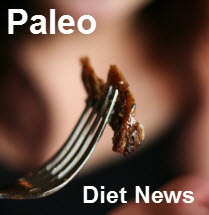Why Are All Of These "High Fat" Diet Studies Not Really High Fat?
Sometimes, I just feel like ranting, and this is one of those times. Seriously….
Why are all of these “high fat” diet studies not really high fat?!
In my mind it renders any study that uses this methodology, completel
y worthless. You can’t form conclusions about
basically anything, if these scientists are really feeding the test subjects what they claim to be. In almost every case, if you look at the study methods, it’s obvious that the macronutrient profile in use is not consistent with modern standards.
The following paragraphs were taken from a Science Daily article called “Extended Daily Fasting Overrides Harmful Effects of a High-Fat Diet: Study May Offer Drug-Free Intervention to Prevent Obesity and Diabetes“:
“Panda’s team fed two sets of mice, which shared the same genes, gender and age, a diet comprising 60 percent of its calories from fat (like eating potato chips and ice-cream for all your meals). One group of mice could eat whenever they wanted, consuming half their food at night (mice are primarily nocturnal) and nibbling throughout the rest of the day. The other group was restricted to eating for only eight hours every night; in essence, fasting for about 16 hours a day. Two control groups ate a standard diet comprising about 13 percent of calories from fat under similar conditions.
After 100 days, the mice who ate fatty food frequently throughout the day gained weight and developed high cholesterol, high blood glucose, liver damage and diminished motor control, while the mice in the time-restricted feeding group weighed 28 percent less and showed no adverse health effects despite consuming the same amount of calories from the same fatty food. Further, the time-restricted mice outperformed the ad lib eaters and those on a normal diet when given an exercise test.”
If you know even a little about nutrition, you will probably immediately notice that the examples of “high fat” foods given in the first paragraph, are potato chips and Ice-cream. The last time I checked, there is FAR more carbohydrate in ice cream and potato chips than fat. They are definitely not “high fat” foods.
Now, it’s important to note, that this statement was from the writer of the report, not the study itself, so it’s highly unlikely that the mice in the study were actually fed ice-cream and potato chips. As of this moment I don’t have access to the full-text study, so I don’t know exactly what the mice were fed, but I should have access as soon as it becomes available on PubMed, so I’ll update this article with that info then…..so stay tuned.
Most of these studies use one of several available pre-made lab diets, made specifically for rodents. Check out this PDF brochure that outlines the ingredients and macronutrient profile of each of these “diets”. The highest percentage of fat in any of the listed lab diets is 59.9% fat, from one of several available fat sources, and then there’s 21.4% Carbohydrate, and 18.6% Protein in each of the “high fat” lab diets. The low-fat diet is composed of 12% fat, 69.4% Carbohydrate, and 18.6% Protein. If you want to get knit-picky, I could argue that 60% fat, 22% carbs, and 19% protein doesn’t add up to a truly High-fat diet…..but it’s close.
I’ve seen some of these studies that claim to utilize a “high fat” diet, that actually used a diet with as little as 43% fat….which obviously is not “high fat” by any standard. It’s difficult to draw conclusions about high fat diets, when you don’t really use a high fat diet. In human studies, I’ve sometimes seen pizza listed as an example of a “high fat” food….come on people, pizza is a high carb food….not high fat!
The largest difference to the validity of a study in my opinion, is the TYPE of fat that was utilized in the study. In the listed rodent lab diets, the five available “high fat” diets are composed of five different predominant fats. The fats are Lard, Crisco (Hydrogenated Vegetable Oil), 1/2 Crisco & 1/2 Lard, Hydrogenated Coconut Oil, and Butterfat. So the research teams have a 1 in 5 chance of picking a variation of the “high fat” diet that DOESN’T contain a large amount of polyunsaturated or trans-fats. ALL of the individual variations of the lab diet contain up to 7% corn oil, with is a problem in and of itself.
Considering that we know that terribly unstable polyunsaturated fats, that are prone to oxidation, could possibly be a contributing cause of diabetes and heart disease, is it really surprising when test animals get sick, after being fed almost any of these common lab diets?
I would be willing to bet that IF the #5TA1 lab diet that contains butterfat was utilized in the aforementioned study, we’d be looking at very different results. Butterfat is predominantly saturated fat, which is not unstable like the PUFA in the other available fats. I have seen a diet high in saturated fats, and low in carbohydrates, completely reverse the onset of Type II diabetes on many occasions, so there is no logic in the idea that saturated fat causes diabetes. However, a diet high in both low-quality carbohydrates and polyunsaturated fats could certainly trigger the on-set of type II diabetes.
There are multiple studies available the show the benefits of a high fat diet in relation to diabetes, but it’s sad that people who have contrary motives use studies such as the one mentioned in the article I quoted from, to prove that a high fat diet actually causes diabetes.
The take home lesson here, is to always investigate the details of the studies we read, because the details can really make the difference in whether a study is useful, or completely invalid.
-
If you found “Why Are All Of These “High Fat” Diet Studies Not Really High Fat?” useful, please click the ‘LIKE’ button below to share on Facebook. We also invite you to leave comments, and join the Paleo Diet News discussion!
Go to www.undergroundnutritionist.com, and download my 30-Day UN-Challenge eBook now……It’s a step-by-step guide to your personal health revolution.
Barry Cripps is a Paleo-based, Certified Nutrition and Wellness Consultant, who operates out of Bowling Green, Kentucky.
For more information please visit: www.undergroundnutritionist.com





